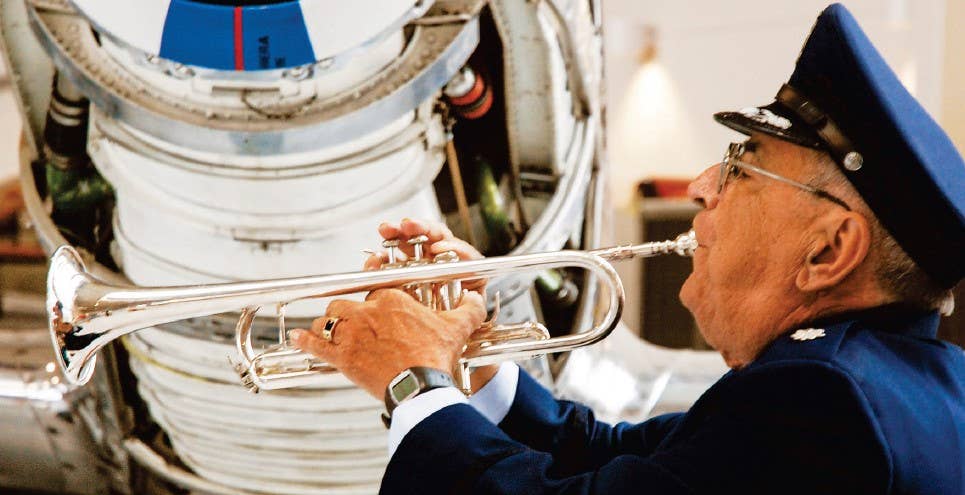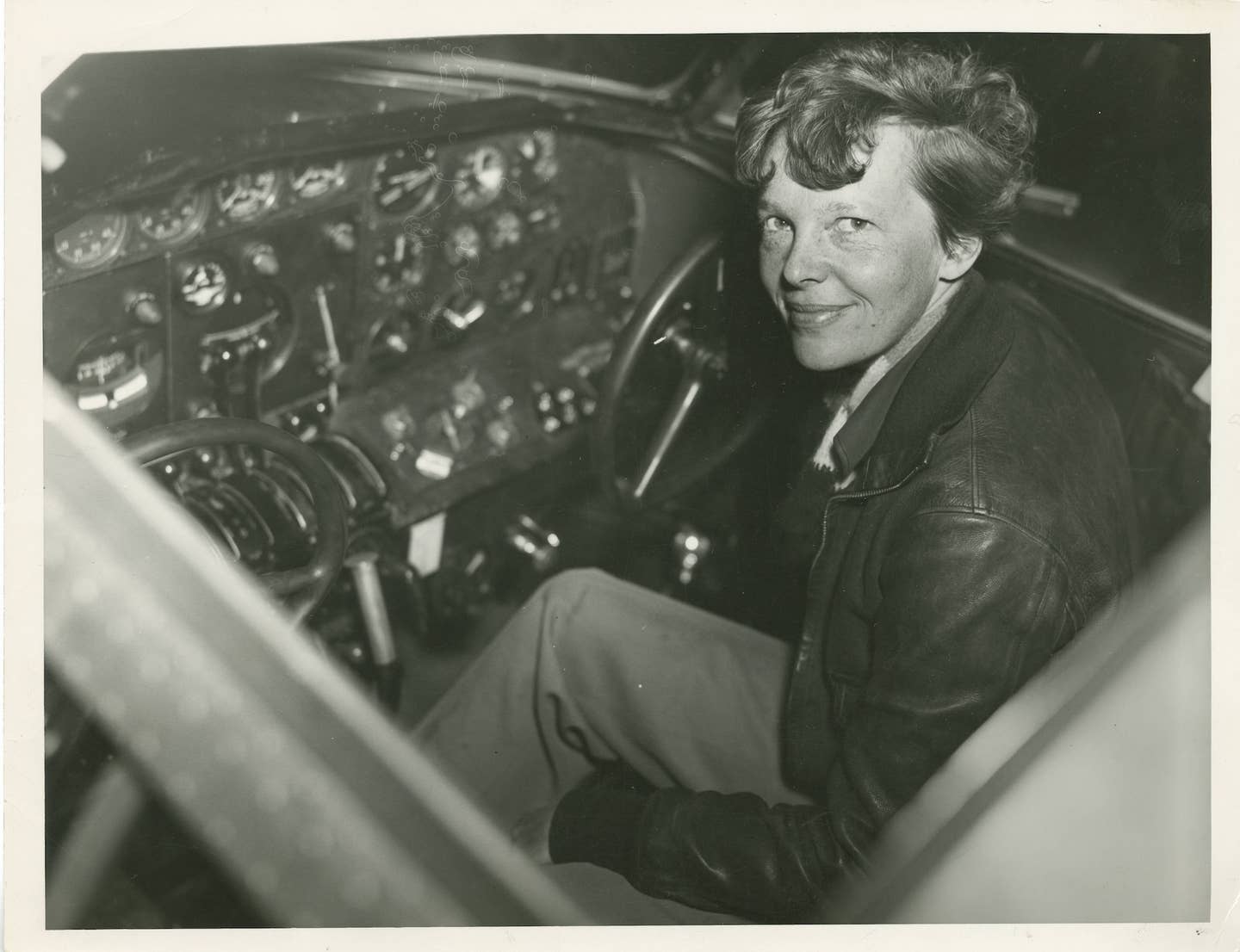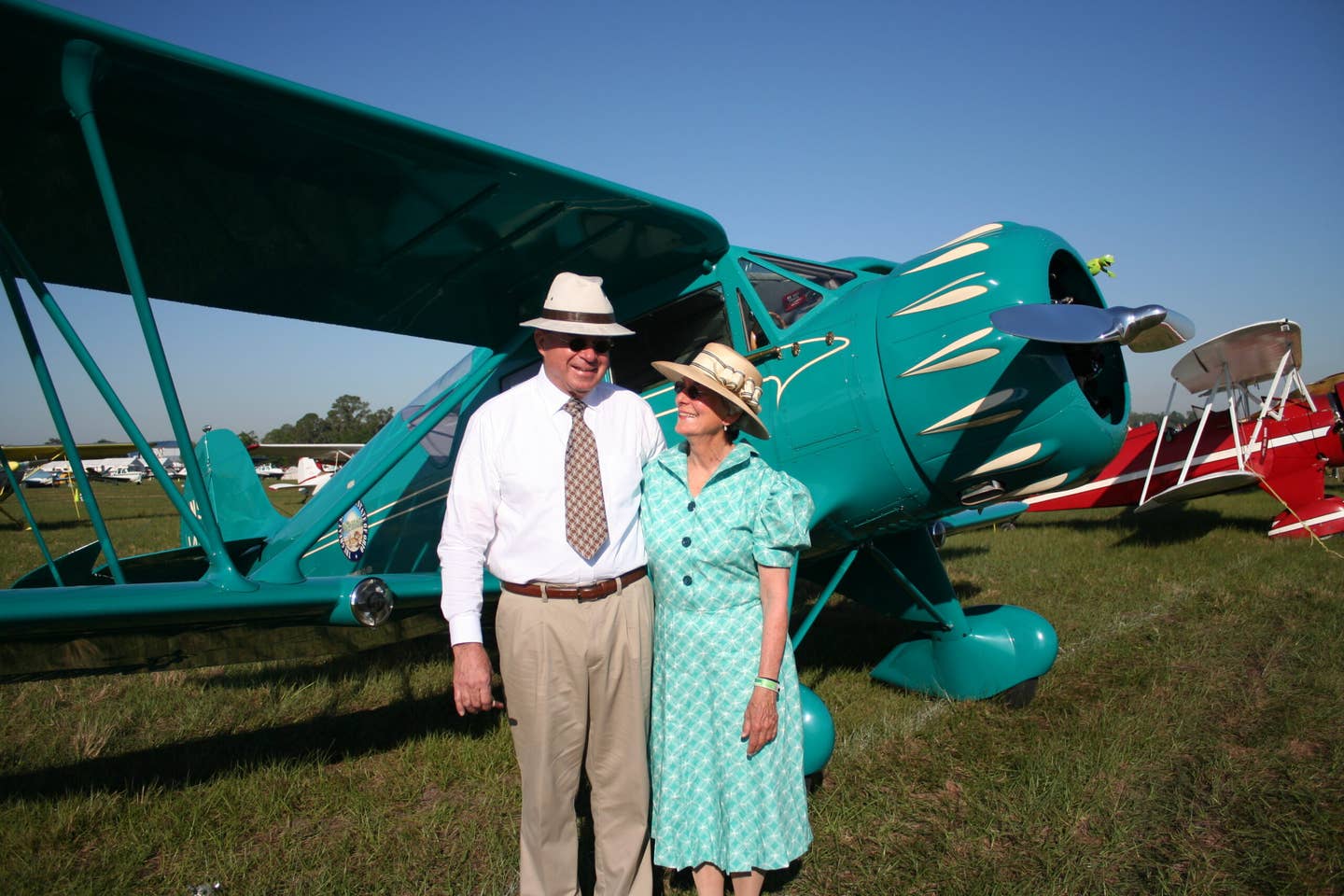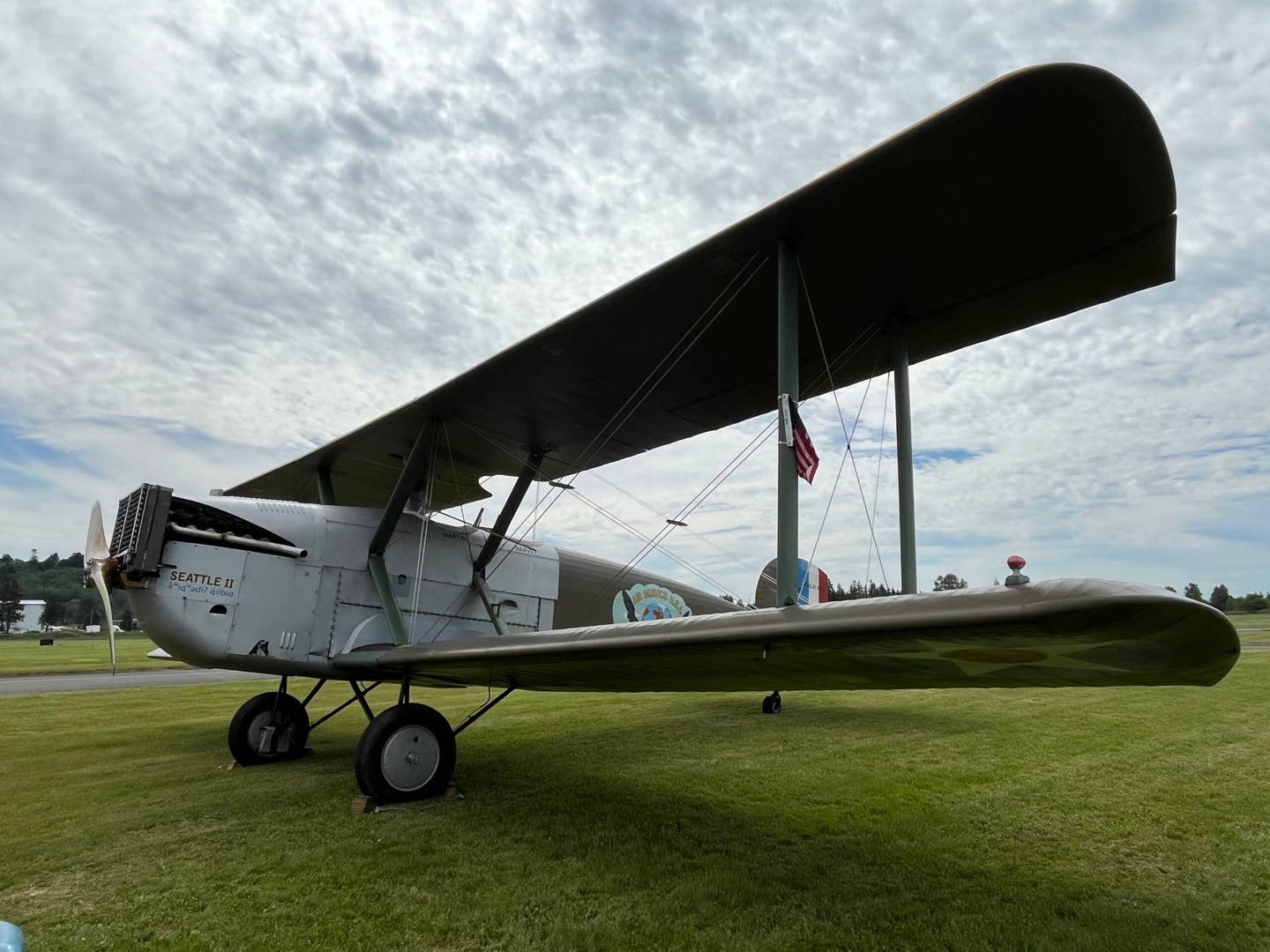Remembering the Centennial of Flight
Ken Hyde of the Wright Experience recalls the big day.
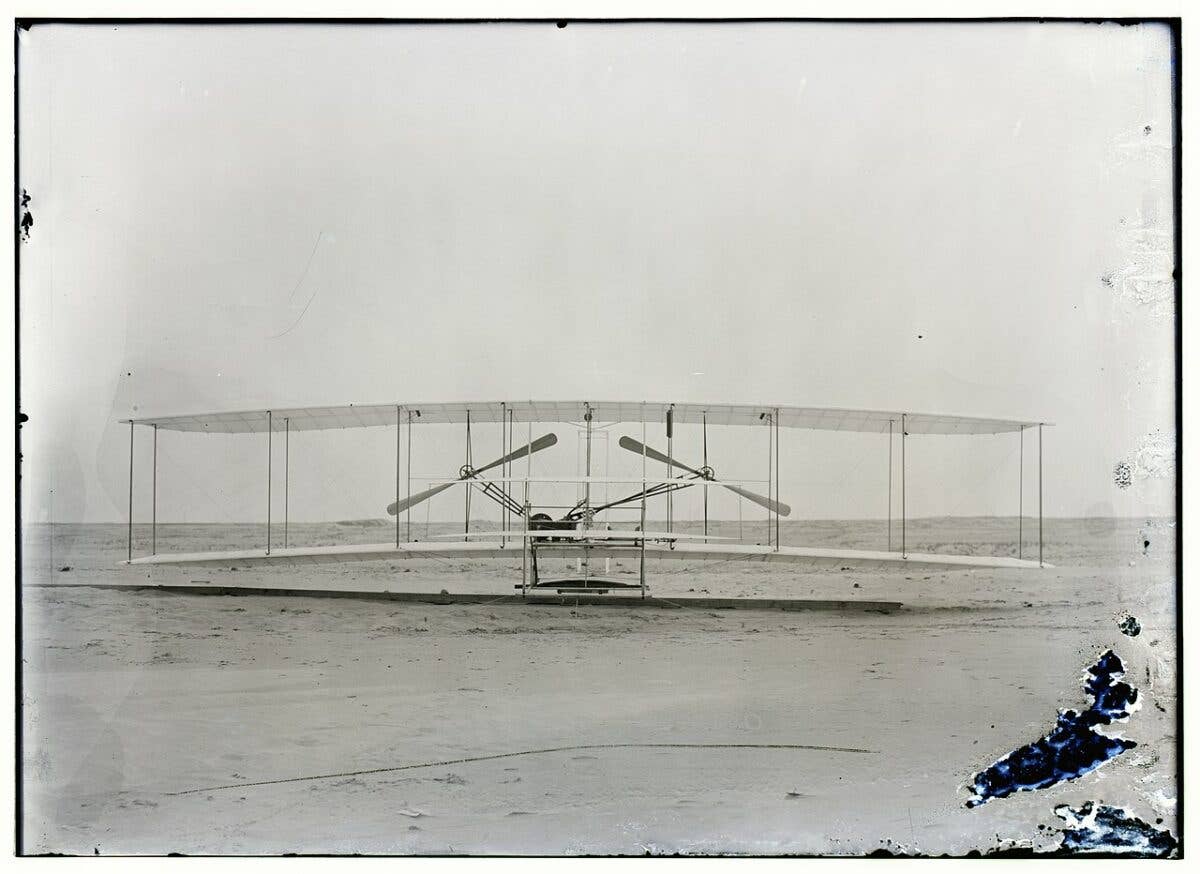
Building a reproduction of the original 1903 Wright Flyer, pictured here, took a great deal of research and reverse engineering. [Courtesy: Library of Congress]
When it comes to vintage aircraft, a replica is defined as one that is "built from scratch using modern materials and methods,” while a reproduction is built using as many original parts as possible along with materials and methods from that time. The aircraft built by the Wright Experience in Warrenton, Virginia, falls into the second category.
The website notes its, "reproductions are airworthy and are built exactly as the Wright brothers’ originals, including original and scratch-built engines. We are proud to have our aircraft available to the public in museums around the country."
The Wright Experience was founded in 1999 by Ken Hyde, a retired pilot from American Airlines, aviation mechanic, and builder of aviation reproductions. Hyde is known for producing historically accurate, airworthy, museum-quality aircraft.
It began in 1992 when Hyde was commissioned by the Army Aviation Museum at Fort Rucker, Alabama, to build a reproduction of the 1911 Wright Model "B," the first airplane to be used by the Army. Hyde did exhaustive research into the materials and construction techniques used by the Wrights to build the airplane. In 1999 Hyde oversaw the creation of three reproductions of the Wright Flyer for the 2003 Centennial of Flight Celebration.
- READ MORE: A Very Soggy First Flight Centennial
The Centennial of Flight reproduction was financed by the Ford Motor Co., and according to an article published in WIRED in 2003, cost a total of $1.2 million.
According to Hyde, the Wrights kept a lot of the details of the construction of the 1903 Flyer—and their other aircraft—in their heads. Therefore building a reproduction requires a great deal of research and reverse engineering, as these airworthy reproductions are built exactly as the Wright brothers’ originals were down to the scratch-built engines, spruce ribs, and thread count of the Pride of the West muslin that covered the wings. The reproductions measure 40 feet across and weigh 605 pounds just like the original.
Like the Wrights, the creators of the reproduction aircraft tested their product as best they could before taking it outdoors.
"We did wind tunnel tests on the reproductions we built. We got really good data," said Hyde.
The data was necessary, as they intended to fly at least one of the aircraft for the 100th anniversary at Kill Devil Hills in North Carolina. The plan was to launch from the rail track at 10:35 a.m. EDT on December 17, 2003, exactly 100 years to the moment of the famous flight.
Training the Centennial of Flight Pilots
Hyde selected a team of pilots to train for the Centennial event—himself, Terry Queijo, and Chris Johnson, both pilots for American Airlines, and private pilot and mechanical engineer Kevin Kochersberger.
The Wrights had trained for the flight using their 1902 glider. They did a series of gravity-assisted launches from the top of a sand dune and heading into the wind—which often blew quite hard at Kill Devil Hills.
"The 1902 glider was much more stable than the 1903 Flyer," said Hyde, "because the Flyer had the engine on one side, which necessitated extending the wing a few feet. That made it unstable."
The Centennial pilots trained using a flight simulator that had the pilot laying on their stomach with their hips in a cradle and shifting side to side to steer through wing warping, just as the Wright brothers had in 1903.
They also used a reproduction of the 1902 glider, but rather than taking off from the dunes—which had become significantly shorter since 1903—the Centennial pilots launched the glider by a rope pulled behind a station wagon.
Scott Crossfield, an aerospace engineer and one of NASA’s original test pilots, was in charge of the training.
"He heard about what we were doing and he wanted to be part of it," Hyde said of Crossfield.
Crossfield played a major role in the development of the North American X-15, which could reach up to Mach 3. Always an engineer, he is credited with many innovations to make the rocket airplane safer, which included putting the engine controls in the cockpit so the pilot had access to them.
"Scott sat in the back of the station wagon holding the other end of the rope with a handle,” said Hyde. “He would shout instructions to the driver. You know [like] slow down! Speed up!"
The Centennial pilots often wore skateboarder helmets and knee and elbow pads as protective gear.
Unlike modern aircraft that can become unstable when they go too slow, the 1903 Flyer had the opposite problem. According to an interview with The New York Times before the 2003 flight, Hyde said the Flyer had to maintain "about 27 mph, at the slowest, to generate enough lift to keep its mass of about 605 pounds, plus pilot, in the air," and it could not exceed 32 mph or else "the nose pitches up and down uncontrollably."
Crossfield, who was in his early 80s, insisted on flying the 1902 glider.
"He was a test pilot and wanted to be sure the aircraft was safe," Hyde said, noting that the pilots never tried to get it more than a few feet off the ground or else it would become difficult to control. "One day, Scott was flying it, and he got up too high. When he started a turn, it came down, hitting the ground nose first. Scott wasn't wearing a seat belt—it was so slow he said that you didn't need one—and he tucked up and rolled out of the aircraft in a perfect somersault. He was OK, not hurt, and the next day he said he wasn't sore. I don't know about that. I was sore the next day just from watching him!"
December 17, 2003
The launch system for the Flyer consisted of a quarter-inch steel track, a rail that the Flyer would glide down. If the conditions were right, the combination of gravity, propellers turning with the help of the 12 hp, 4-cylinder gasoline engine powering two pusher propellers, and a headwind would result in enough lift to allow the Flyer to get airborne. Unfortunately, this did not happen on December 17, 2003.
"The day of [the] centennial [flight] was a rainy mess," Hyde said. "Kevin Kochersberger was the pilot."
The fabric wings absorbed a lot of the moisture, adding to the weight of the aircraft, and the team made the mistake of waxing the top rail instead of painting it.
"The water beaded up on the metal and didn't run off,” Hyde said. “As a result, the front roller, which was a bicycle hub, sort of squeegeed the water forward, and as it built up, it blew back and killed the number four cylinder. The airplane would not fly on three cylinders."
The Flyer never obtained flying speed. Instead it went off the track and hit the sand, snapping a crosswire and coming to rest on its right wing.
The crowd, estimated at more than 35,000 in attendance and many more watching live video coverage, groaned in disappointment. Repairs were made to the aircraft, and the organizers waited for a few hours to see if Mother Nature would cooperate and supply the necessary gust of wind, but it was not to be.
Organizers did note that there had been two successful practice flights prior to the big day, one resulting in a flight covering 100 feet the other 115.
Although they were disappointed that the Centennial celebration did not include a flight but rather a belly-flop, Hyde said "it was in the Wrights’ papers that they had experienced the same thing."
Where Are They Now?
The 1903 Flyer that attempted flight in 2003 resides at the Henry Ford Museum of American Innovation in Dearborn, Michigan.
Another of the Flyer reproductions is displayed at the Wright Brothers National Memorial at Kitty Hawk, North Carolina, and the third is at the Museum of Flight in Seattle.

Subscribe to Our Newsletter
Get the latest FLYING stories delivered directly to your inbox

